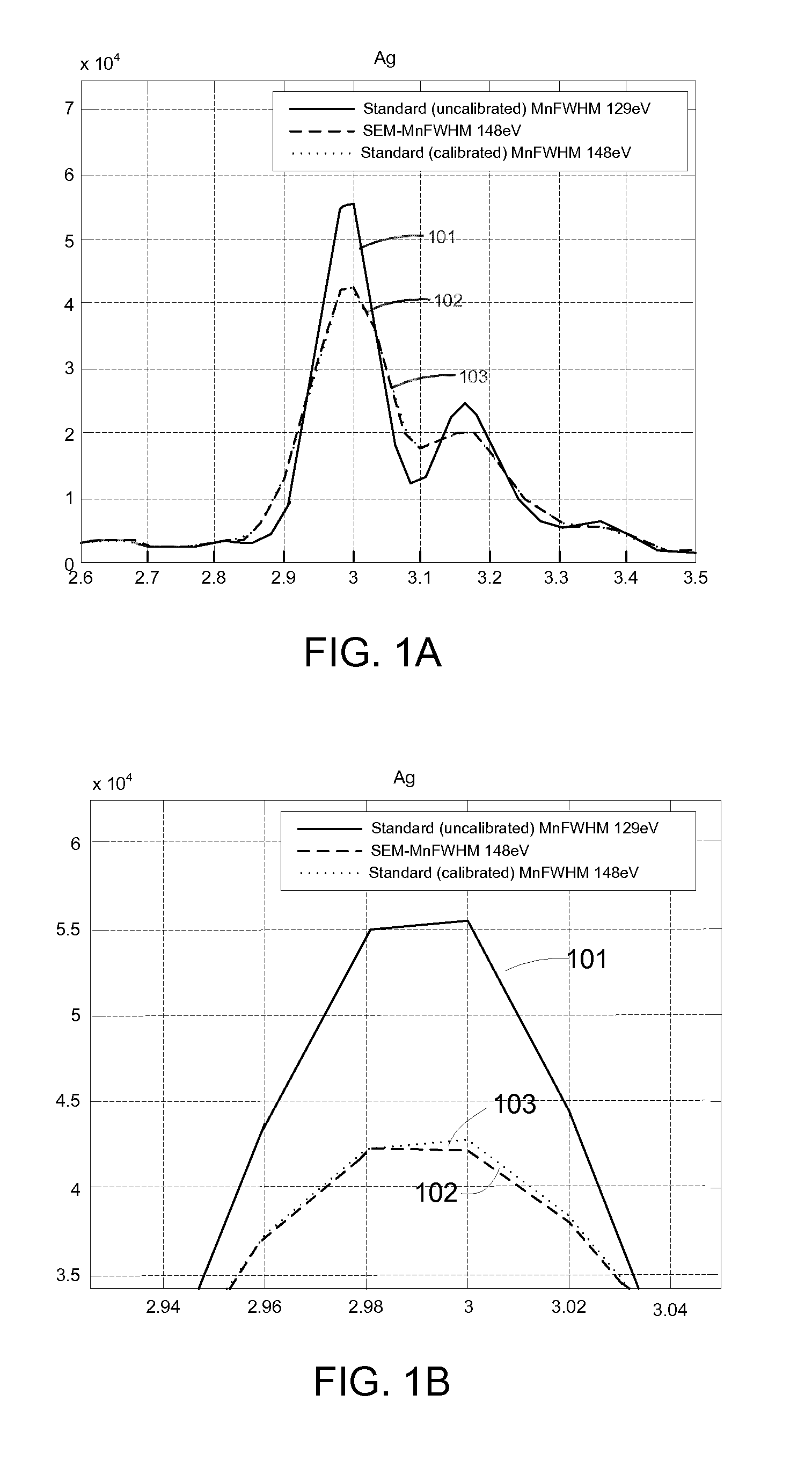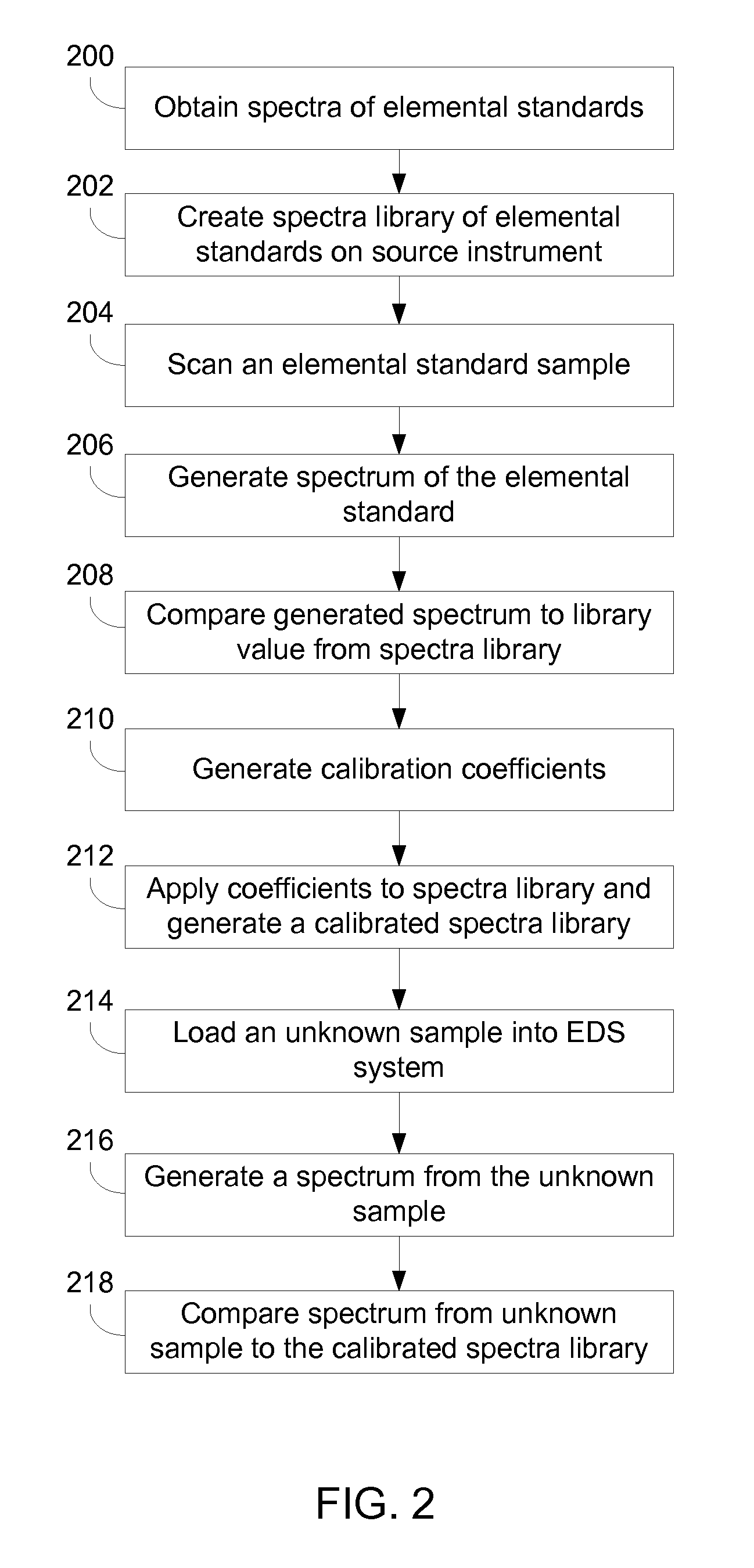Automated EDS standards calibration
a technology of automatic calibration and eds standards, applied in the field of automatic eds standards calibration, can solve the problems of inability to perform the calibration of those elements, prohibitively expensive calibration types, and inability to perform factory calibration using prior art methods
- Summary
- Abstract
- Description
- Claims
- Application Information
AI Technical Summary
Benefits of technology
Problems solved by technology
Method used
Image
Examples
Embodiment Construction
[0022]Preferred embodiments of the present invention provide a method for calibrating a local EDS instrument from an x-ray spectrum of a single elemental standard. Preferably, the local EDS instrument will have a stored library containing high quality spectra for all elements being analyzed. The analysis of the single element on the local instrument can be compared to the library spectra for that element, and the comparison used to define a transformation that is used to create a calibrated spectra library that includes a calibrated spectrum for each spectrum in the original library. As a result, the calibration library spectra are much closer to the spectra that would be produced if the calibration standards had been analyzed on the same local instrument using the same instrument set-up. The spectra generated by the local EDS instrument can then be compared to the adjusted library spectra to determine elements in an unknown mineral. In preferred embodiments, this serves to greatly ...
PUM
| Property | Measurement | Unit |
|---|---|---|
| energy-dispersive x-ray spectroscopy | aaaaa | aaaaa |
| energy | aaaaa | aaaaa |
| spectra | aaaaa | aaaaa |
Abstract
Description
Claims
Application Information
 Login to View More
Login to View More - R&D
- Intellectual Property
- Life Sciences
- Materials
- Tech Scout
- Unparalleled Data Quality
- Higher Quality Content
- 60% Fewer Hallucinations
Browse by: Latest US Patents, China's latest patents, Technical Efficacy Thesaurus, Application Domain, Technology Topic, Popular Technical Reports.
© 2025 PatSnap. All rights reserved.Legal|Privacy policy|Modern Slavery Act Transparency Statement|Sitemap|About US| Contact US: help@patsnap.com



